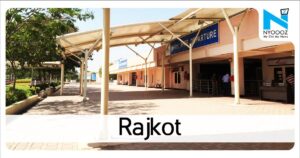
To understand Real-Time Engagement, you need to clearly understand what it is and how it can benefit your business. This article covers several key aspects of the technology, including Personalized insights, Automated workflows, Cross-channel optimization, and speed and agility. After reading this article, you will be well-equipped to implement this technology and create effective campaigns. The advantages of Real-Time Engagement are endless, and visiting Agora.io will provide the information you need to make the best use of it.
Personalized insights
Personalized insights from real-time engagement enable organizations to build customer relationships and drive business growth. For ambitious marketers, real-time engagement is the key to success.
The power of real-time personalization is rooted in the ability to monitor data sources to identify changes in customer behavior, motivation, intent, and interest. While this is a scary concept for some, the benefits outweigh the negative connotations. This technology enables marketers to tailor their offers based on deep customer knowledge and automatically suggest appropriate products and services. Once implemented, real-time personalization will boost customer satisfaction, improve user experience, and enhance customer loyalty.
Automated workflows
The benefits of workflow automation are many. First, you can set up a series of personalized processes that guide users to the desired endpoint. With workflows, you can customize subject lines and place users on lists based on their behavior. You can even send email campaigns to customers based on their interests so that they will receive relevant content. Secondly, workflows can increase your sales team’s productivity by allowing you to get real-time visual reporting.
Testing a workflow is crucial, as it will help you identify any potential success gaps. Then, once you have implemented a workflow, you can begin to monitor it and evaluate its performance to determine possible improvements. For example, Cisco Systems automated its CRM process and cut down on 75,000 customer calls per month – saving $270 million in operating expenses. With these benefits, your business can no longer rely on manual processes.
Cross-channel optimization
One of the most effective ways to increase customer engagement is to optimize the customer journey across channels. Cross-channel optimization enables companies to deliver relevant messages across different channels and make data-driven decisions. For example, a cross-channel engagement plan can help identify patterns and trends in customer behavior. In addition, it allows companies to adjust their branding accordingly to ensure that customers have the same experience across all channels. But, to maximize results, it is essential to follow some rules when it comes to cross-channel engagement:
Cross-channel optimization is triggering campaigns on social media, email, and mobile. The latter is an effective way to convert non-subscribers into customers. Mobile users have higher engagement rates than desktop users but are more likely to convert if prompted by a compelling offer.
Speed and agility
As the speed of buying decisions increases and consumer preferences evolve, the ability to create contextually relevant, non-intrusive, and valuable real-time communications is essential. For real-time engagement to be effective, it must be non-intrusive and provide value in milliseconds or less. For that reason, real-time engagement requires both agility and creativity. Depending on the industry and the overall business objectives, it may be beneficial to consider some critical considerations before implementing a real-time communications strategy.
Using the software development metaphor, an Asian telco decided to move fast after its existing operating model could not capture its $200 million run rate. Instead, the leadership team created four agile microcosms, bringing together doers from multiple departments to work toward a joint business objective. For example, one of the teams was charged with reducing the number of inbound service calls. It worked well because the teams exhibited high levels of collaboration and agility.







